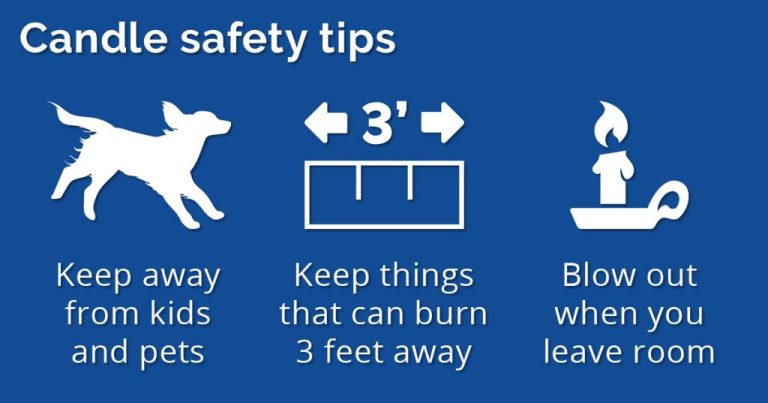Why Can’T I Sleep With A Candle On?
Why Do We Need Sleep Anyway?
Sleep is vital for our health and wellbeing. Adults need an average of 7-9 hours of sleep per night for optimal health, yet many struggle to get enough high-quality sleep. Poor sleep has been linked to numerous health problems including obesity, high blood pressure, memory difficulties, and diabetes. With so many benefits to getting adequate sleep, it’s clear why sleep should be a priority.
Fire Risk
Falling asleep with a lit candle poses a serious fire hazard. The open flame is a constant ignition source that can easily set nearby combustible materials alight if left unattended or knocked over. Fabrics, books, curtains, bedding and furniture are all flammable, and having an open flame so close while sleeping makes the chances of accidental fire much higher.
Many house and apartment fires start from open flames igniting surroundings at night when people are sleeping. Candles left burning in a bedroom are an obvious fire risk that should be avoided. Fire spreads quickly while people are asleep and unable to notice and react in time. This can lead to severe property damage, injury or even death.
It’s much safer to blow out candles before sleeping to eliminate the open flame hazard. Battery-operated flameless candles are a safer option that provides light without fire risk.
Burn Risk
Having an open flame in your bedroom while you sleep comes with the risk of accidentally knocking the candle over and causing burns. If you roll over or knock into the nightstand, you could tip the candle and spill hot wax or cause the flame to ignite bedding or clothes.
Falling asleep with a lit candle runs the danger of not being alert enough to put out flame-ups or splashed wax. Even a small candle can produce flames up to one foot high, which can quickly spread to curtains or blankets if tipped over.
Candle wax can reach temperatures up to 185°F. Spilled wax at that temperature can instantly cause severe burns if it lands on your skin. These burns would be extremely painful and require medical treatment.
To avoid burn injuries from a tipped over candle, it’s safest to blow it out before falling asleep. Don’t leave a lit candle unattended for any period of time in your bedroom.
Wax Risk
Melting candle wax can drip or spill onto furniture, floors, bedding, and skin, leading to damage or burns. The hot wax can permanently stain or leave marks on surfaces. Even a small amount of spilled wax that has cooled can be difficult to fully remove from fabrics, wood, or carpet. Sleeping with a lit candle risks wax spills on bed sheets, blankets, pillows, and pajamas. Wax can also drip onto bare skin, especially fingers, hands, arms, and legs. The hot molten wax causes a burning sensation and can result in blisters or skin discoloration if not treated quickly. While wax may seem harmless, spilled wax that has dripped or splattered near the flame of a burning candle can potentially ignite as well. The damage that fallen candle wax can do means it’s best not to sleep with an open flame nearby where wax can drip or spill while you sleep.
Light Disruption
One of the main reasons sleeping with a candle on can disrupt your sleep is the effect light has on circadian rhythms and melatonin production. The light emitted from the flame can interfere with your body’s internal clock and make it more difficult to fall and stay asleep.
Exposure to light before bed sends signals to your brain to suppress the release of melatonin, the hormone that helps control your sleep-wake cycle. The blue wavelengths of light are especially disruptive. Since candlelight contains blue wavelengths, having a candle on at night will decrease natural melatonin levels.
This light exposure confuses your circadian system and makes your brain think it is still daytime. With lowered melatonin and disrupted circadian rhythms, you may have difficulty falling asleep, experience fragmented sleep, or wake up frequently throughout the night.
For a healthy sleep cycle, experts recommend avoiding bright light exposure in the evenings. Light from candles, screens and other sources can all inhibit melatonin release and keep your brain alert when you want it to wind down for sleep.
Oxygen Depletion
Burning a candle requires oxygen. As the candle burns, it consumes oxygen from the surrounding air. In an enclosed space like a bedroom, this can gradually deplete the available oxygen over time. Oxygen levels normally sit around 20.8% but levels below 19.5% are considered dangerous. If oxygen falls below 16%, it can lead to rapid breathing, headaches, dizziness, nausea and unconsciousness. At very low oxygen concentrations, there is a risk of brain damage or even death by suffocation. This risk is increased if sleeping, since you may not wake up to the warning signs of oxygen deprivation.
Multiple candles or very large candles will consume oxygen faster in an unventilated room. Children and infants are most vulnerable since they breathe more air relative to their body size. Elderly or sick individuals are also at higher risk. Oxygen depletion can be prevented by keeping bedroom doors open, allowing outdoor air to circulate and refresh oxygen levels. A small window opening also helps. But for safety, it’s recommended to blow candles out before sleeping and not keep them continuously burning overnight in an enclosed bedroom.
Soot Emissions
Burning a candle produces smoke that contains tiny particles of unburned carbon commonly known as soot. This soot can be inhaled and coat the lungs, leading to respiratory irritation and other health issues. Soot particles from candle smoke are very small, so they can penetrate deeply into the lungs and enter the bloodstream. Long-term exposure to candle soot can cause lung inflammation and increase the risk of lung cancer. Those with existing respiratory conditions like asthma are especially vulnerable. Children are also at higher risk, as their lungs are still developing. Leaving a candle burning overnight in an unventilated room significantly increases exposure to soot emissions. It’s best to blow candles out before going to sleep and to limit their use to ventilated spaces. Consider using battery-powered flameless candles in the bedroom for ambience without the soot emissions.
Fragrance Disruption
Sleeping with a scented candle burning can overstimulate your senses and make it difficult to relax. Candles are often scented with essential oils and fragrances designed to have an arousing or stimulating effect. While these scents may smell pleasant, they can be too invigorating for the sleeping environment.
When you’re trying to sleep, you want your mind and body to wind down, making calming fragrances like lavender more suitable. The strong scents released from a burning candle can overpower your senses, keeping you mentally and physically alert when you want to transition into sleep. Additionally, some people may find certain artificial fragrances irritating or bothersome.
Allowing a scented candle to burn throughout the night bombard your nose with fragrance during a time when you want your senses to be free of stimulation. Stick to unscented candles or mild relaxing scents if you want to keep a candle burning while you sleep.
Safety Tips for Burning Candles at Night
If you want to burn candles at night but are concerned about safety, there are some precautions you can take:
-
Use LED candles instead of real candles. LED candles provide flickering light like a real candle, but without an open flame.
-
If using real candles, choose ones with smaller wicks, which produce less smoke and are less likely to start fires.
-
Place candles in fireproof holders made of nonflammable materials like glass or metal. This contains spills and prevents surfaces underneath from catching fire.
-
Keep candles away from flammable materials like curtains, bedding or clutter. Leave at least 12 inches of clearance.
-
Never leave burning candles unattended. Extinguish them before leaving the room or going to sleep.
-
Avoid using candles in bedrooms altogether. Opt for battery-powered flameless candles instead.
With the right precautions, you can safely enjoy candlelight ambience at night. But take care to minimize fire risks.
Conclusion
As discussed, there are several reasons why it is unsafe and inadvisable to sleep with a candle burning in your room. The primary reason is the major fire risk posed by an unattended flame. Candles can easily get knocked over by pets or gusts of wind while you sleep, igniting nearby combustible materials like bedding, curtains, or furniture. This could lead to a deadly house fire that you may fail to wake up for in time. Even if a fire does not ignite, the open flame still poses a burn risk if you accidentally come into contact with it while sleeping or groggy. The heat can also melt wax in unpredictable ways, potentially dripping onto your body or belongings. Beyond the physical safety risks, the light and smell from a burning candle can disrupt your sleep quality and brain waves. And candles consume oxygen in your room while releasing toxic soot. For all these reasons, it’s wise to extinguish any candles before sleeping.
In summary, do not sleep with candles lit in your room due to the serious fire hazard, burn risk, wax risk, light disruption, oxygen depletion, and soot emissions. Make sure all candles are completely blown out before going to bed for maximum safety.




